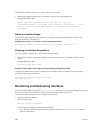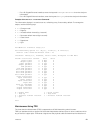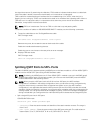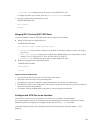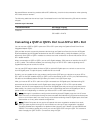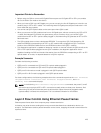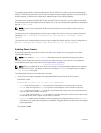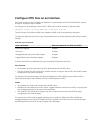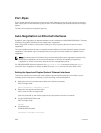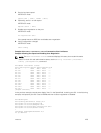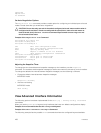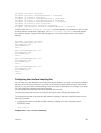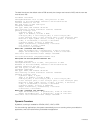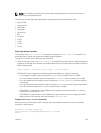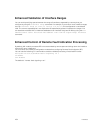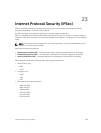
Port-Pipes
A high-speed data bus connection used to switch traffic between front-end ports is known as the port
pipe. A port pipe is a Dell Networking-specific term for the hardware path that packets follow through a
system.
The MXL switch supports single port pipe only.
Auto-Negotiation on Ethernet Interfaces
By default, auto-negotiation of speed and duplex mode is enabled on 100/1000/10000 Base-T Ethernet
interfaces. Only 10GE interfaces do not support auto-negotiation.
When using 10GE interfaces, verify that the settings on the connecting devices are set to no auto-
negotiation.
The local interface and the directly connected remote interface must have the same setting, and auto-
negotiation is the easiest way to accomplish that, as long as the remote interface is capable of auto-
negotiation.
NOTE: As a best practice, Dell Networking recommends keeping auto-negotiation enabled. Only
disable auto-negotiation on switch ports that attach to devices not capable of supporting
negotiation or where connectivity issues arise from interoperability issues.
For 100/1000/10000 Ethernet interfaces, the negotiation auto command is tied to the speed
command. Auto-negotiation is always enabled when the speed command is set to 1000 in IOS.
Setting the Speed and Duplex Mode of Ethernet Interfaces
To discover whether the remote and local interface requires manual speed synchronization, and to
manually synchronize them if necessary, use the following command sequence.
1. Determine the local interface status. Refer to the following example.
EXEC Privilege mode
show interfaces [interface] status
2. Determine the remote interface status.
EXEC mode or EXEC Privilege mode
[Use the command on the remote system that is equivalent to the first command.]
3. Access CONFIGURATION mode.
EXEC Privilege mode
config
4. Access the port.
CONFIGURATION mode
interface interface slot/port
428
Interfaces



